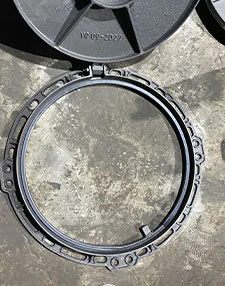barbed wire fence installation
Installing a Barbed Wire Fence A Comprehensive Guide
Barbed wire fences have long been utilized for a variety of purposes, from marking boundaries to protecting livestock and securing property. Understanding how to properly install one can save time, reduce costs, and enhance the effectiveness of your fencing solution. This guide will walk you through the key steps and considerations for a successful barbed wire fence installation.
Planning and Preparation
Before diving into installation, careful planning is essential. Determine the purpose of your fence Is it for livestock containment, security, or property delineation? Next, check local regulations regarding fencing materials, height, and other specifications. It's important to ensure your plans comply with any zoning laws or homeowners association requirements.
Once you've established the purpose and legal considerations, measure the area where the fence will be installed. Mark the layout using stakes and string to visualize the fence line. Ensure that the line is straight and marks all corners and gates clearly.
Gathering Materials and Tools
The primary materials needed for a barbed wire fence include
1. Barbed Wire Purchase high-quality barbed wire, typically sold in rolls. The number of rolls will depend on the length of the fence. 2. Fence Posts Choose between wooden, metal, or vinyl posts. Wooden posts are common, with sizes ranging from 4 to 6 inches in diameter, depending on the type of fence you're constructing and the conditions of the terrain. 3. Wire Tensioning Tools These tools will help you tighten the wire, ensuring it remains taut. 4. Post Hole Digger This tool is necessary for digging holes for the fence posts. 5. Level A level checks the straightness of the posts. 6. Concrete (optional) For added stability, especially in loose soil. 7. Wire Cutters For trimming the barbed wire as needed.
Installation Steps
barbed wire fence installation

1. Setting the Posts - Spacing Space the fence posts about 10 to 12 feet apart for optimal stability. Corner posts should be set at more condensed intervals (e.g., 8 feet apart). - Digging Holes Use a post hole digger to create holes for each post. Holes should be at least 2 feet deep to ensure adequate anchoring, especially in regions with frost. - Placing Posts Place each post in its hole, ensuring it is vertical with the level. Pour concrete into the hole around the post for added reinforcement, if desired.
2. Stringing the Barbed Wire - Begin at one of the corner posts and tie one end of the barbed wire to the post using wire knots or clamps. - Run the wire to the next post, ensuring it stays tight. Attach it securely to each post, using staples or wire, depending on your post type. - If you are installing multiple strands, repeat this process for each layer of wire, typically spacing the strands 12 to 15 inches apart.
3. Tensioning the Wire - Use a wire tensioning tool to pull the wire taut between the posts. This is crucial for preventing sagging and ensuring the effectiveness of the fence. - After tensioning, secure each section of wire to the posts.
4. Finishing Touches - Once all barbed wire is strung and tightened, inspect the entire fence for any loose sections or sharp edges that may require trimming. - Consider adding a gate if necessary, and incorporate any additional security measures as needed.
Maintenance and Safety
After installation, regular maintenance is important for a long-lasting fence. Inspect the wire for rust or damage, check posts for stability, and clear any overgrown vegetation that may impede the fence's integrity. Remember, barbed wire can be hazardous. Use gloves when handling to prevent injuries from sharp edges.
Conclusion
A properly installed barbed wire fence can offer durable, effective protection for your property or livestock. By following these steps and taking care during the installation process, you can ensure that your fence stands strong against elements and external pressures. Whether you’re a seasoned handyman or a first-time DIY enthusiast, investing time in proper planning and execution will yield a fence that meets your needs for years to come.
-
Space-Saving Chain Fence Hacks Vertical Gardening with Cyclone MeshNewsJul.16,2025
-
Innovations in Iron Nail Wire Production for Modern ConstructionNewsJul.16,2025
-
Creative Uses of Wire Netting Fence in Modern Landscape DesignNewsJul.16,2025
-
Barbed Wire Fence Innovations in Anti-Climb TechnologyNewsJul.16,2025
-
Architectural Uses of Umbrella Nails for Aesthetic Roof DesignsNewsJul.16,2025
-
Architectural Uses of Razor Barbed Wire in Secure Urban DesignNewsJul.16,2025




